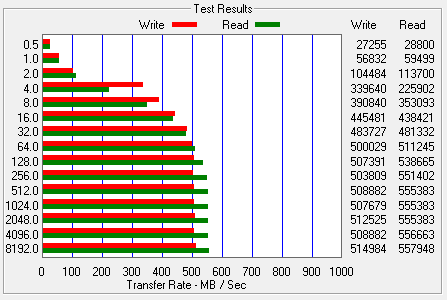Asus Zenbook UX21 Ultrabook, The New Thin
SiSoft SANDRA
Synthetic General Performance Mertrics


SANDRA CPU and Memory Performance


SANDRA Multimedia and Physical Disk Performance
However, check that bottom right graph, if you look at nothing else here. This is the physical read performance test from the Zenbook's 128GB ADATA SSD. It's based on a SandForce 2200 series 6Gbps SATA controller and at 500+MB/s, it's the fastest notebook drive or SSD we've seen in action to date.
With these kind of read numbers, we had to check the rest of the story in ATTO. Below are read and write throughput metrics on various transfer sizes.

|
Maxon's Cinebench R11.5 benchmark is based on the company's Cinema 4D software used for 3D content creation and tests both the CPU and GPU in separate benchmark runs. On the CPU side, Cinebench renders a photorealistic 3D scene by tapping into up to 64 processing threads (CPU) to process more than 300,000 total polygons, while the GPU benchmark measures graphics performance by manipulating nearly 1 million polygons and huge amounts of textures.

We'll spend a bit of time analyzing the numbers here because they're interesting. First, let's look at the OpenGL scores. The Zenbook isn't a machine that is designed to handle the workloads of a high-end professional 3D rending tool like Cinema 4D. However, Intel's graphics drivers have been slowly improving since their Sandy Bridge architecture first launched. Though it can't compete with the likes of a discrete mobile GPU from NVIDIA or AMD, it actually out-paces the Core i5 2410M, which is slightly stronger from a CPU standpoint in this test, due to its higher base clock speed. The i5 2410M is also a 35W TDP CPU, versus 17W for the i7 2677M, however. Both chips have 1.2GHz max dynamic graphics core clocks, though the ThinkPad Edge was running previous generation Intel graphics drivers.
From strictly a CPU performance view, the Zenbook puts up a reasonably solid number, falling in between the i5 2410M and its high base clock and the Core i7 2620M with its 3.4GHz max Turbo Boost speed.






